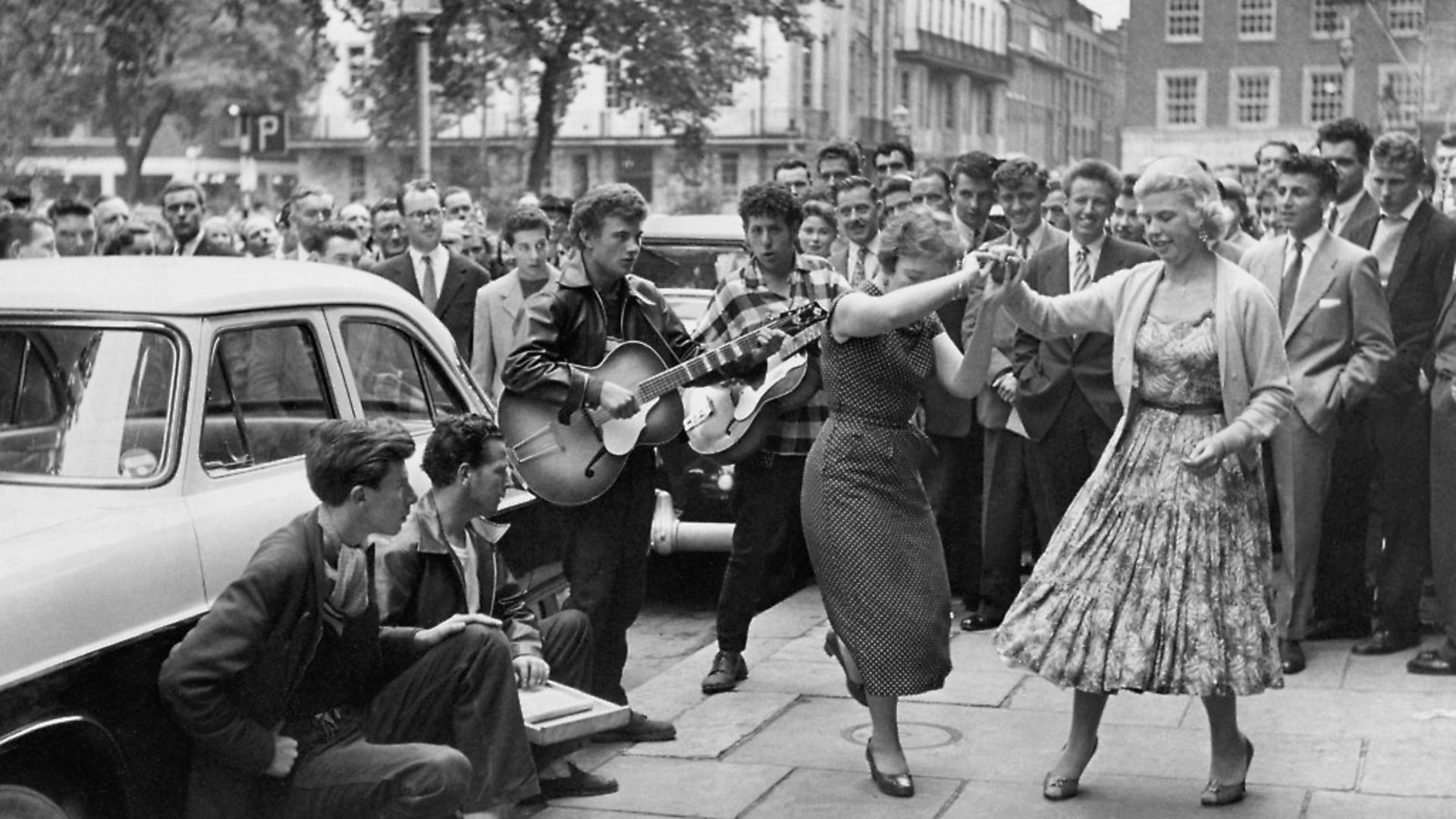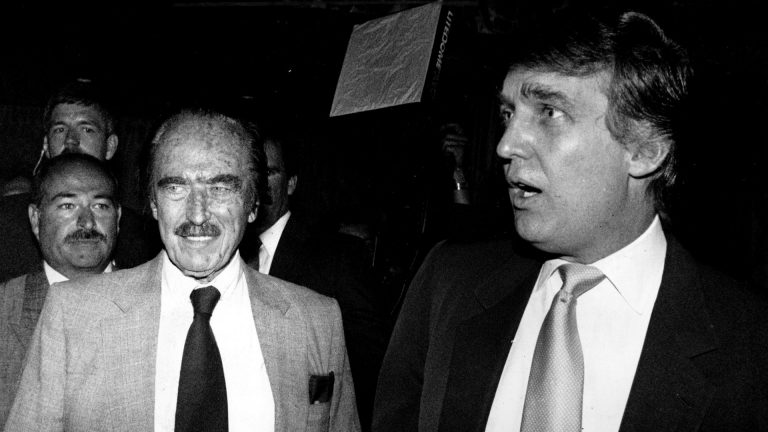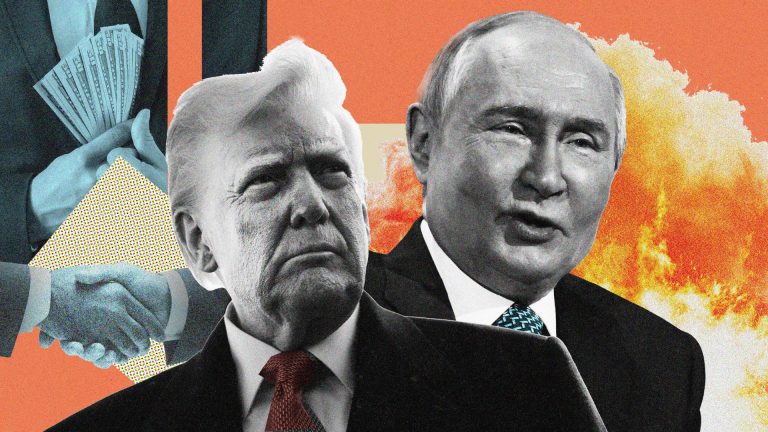
As the washboard-and- tea-chest movement peaked, and took British music ever closer to a new era, the Beat Generation and original ‘highschool’ musicals dragged the US in a different direction. SOPHIA DEBOICK reports.
Sandwiched between the year Elvis made his first national television appearance, sending Heartbreak Hotel to No.1, and the advent of British rock ‘n’ roll with the emergence of his British counterpart, Cliff Richard, 1957 seems like a no-man’s land, devoid of an essential breakthrough moment. Yet, in the UK, it was the moment a movement peaked which laid the groundwork for so much that came after it. Meanwhile, across the Atlantic, Buddy Holly broke through, and the ‘highschool’ sound exploded, even as it was met by harder-rocking music.
As the 1960s fast approached, the year was torn between proto-psychedelic whimsy and seismic changes to the shape of the world. The vivid antics of Dr. Seuss’ Cat in the Hat and the birth of the frisbee, icons of mid-century childhoods, were symbolic of a carefree post-war popular culture, while the April Fools’ Day Panorama spaghetti tree hoax suggested that even the BBC was becoming less stuffy.
Harold Macmillan said Britons had ‘never had it so good’. Yet, there was wrenching change afoot. The fallout of the previous year’s Suez Crisis had seen Anthony Eden resign and was followed by Ghanaian and Malaysian independence and the announcement that Singapore would break from the empire on New Year’s Day 1958. Social change came in the form of the Wolfenden report’s recommendation that homosexuality be legalised and the unveiling of plans for women to enter the House of Lords.
In the wider world, the Treaty of Rome established the EEC and saw nations that were at war with each other only a little over a decade before unite in a common cause, while the more open-looking Soviet Union of Khrushchev launched both Sputnik 1 and Sputnik 2. The Space Age had begun – proof that the world was being remade.
In Britain, culture was rising to the challenge of this changing world. Kitchen sink realism, in this year coming in the shape of John Braine’s Room at the Top, interrogated social divisions, while John Wyndham’s The Midwich Cuckoos poked at issues of sex, gender and childbearing through the veiled guise of an alien invasion saga.
Richard Hoggart’s The Uses of Literacy unpicked the new world of mass culture, while John Osborne’s The Entertainer took the demise of music hall in the face of rock ‘n’ roll as a metaphor for the decline of the British empire. Indeed, music was no sideshow in this year, but a forum for the confrontation of social and moral values, and the buds of a British rock ‘n’ roll revolution were about to explode into bloom.
When the Cavern Club opened in mid-January 1957, the opening night bill of the Merseysippi Jazz Band, the Wall City Jazzmen, and the Ralph Watmough Jazz Band betrayed its jazz club ambitions, but it soon became much more. It brought blues to the north west, as Big Bill Broonzy played there in March, but the featuring of the Coney Island Skiffle Group at the bottom of that opening night bill indicated the sound that was really heralding change in Britain – the fast-tempoed, US-derived sound of skiffle, often played on washboards and DIY tea chest instruments.
The day after the Cavern opened, Tommy Steele, formerly of legendary Soho coffee bar the 2i’s resident skiffle band The Vipers, scored his first No.1. Steele’s faux American accent and the rather twee whistled melody on rock ‘n’ roll pastiche Singing the Blues hardly sounded like revolution. But it marked a change in the British charts, confirmed when The Vipers themselves got to No.10 with Don’t You Rock Me Daddy-O the following month, achieving the same chart position with The Cumberland Gap in April.
Merseyside’s own John Lennon was watching these changes with avid interest. He bought a cheap Gallotone Champion acoustic guitar from a mail-order catalogue and promptly started a band, which was getting some local notoriety by the summer. On August 7, his Quarry Men Skiffle Group made their Cavern debut and by October Paul McCartney had joined, the 15-year-old having met Lennon when the renamed Quarrymen played a church fete in July.
In the meantime, skiffle’s chart success had continued, with Johnny Duncan’s Last Train to San Fernando getting to No.2 in September, while June’s The Tommy Steele Story, for all its squeaky-cleanness, put prominent members of the scene on the big screen.
While Steele used skiffle as a springboard into mainstream success, the Beat poets were publishing seminal texts that became the literary companion to Britain’s skiffle and jazz scenes for those at the cutting edge of cool. Kerouac’s roman-à-clef On The Road appeared at the end of the year, and was studded with musical references, while Ginsberg’s poem Howl was a cause célèbre by virtue of the ultimate literary publicity weapon, an obscenity trial.
Elvis’ year was summed up by the famous incident when he was filmed only from the waist up on The Ed Sullivan Show, such was the association of his swivelling hips with moral outrage. November’s Jailhouse Rock gave the world a moment of iconicity still unrivalled, and his purchase of Graceland in March indicated the rewards of his success that would change his life forever. Meanwhile, Buddy Holly exploded on to the scene as his debut single on Brunswick after a false start with Decca, That’ll Be The Day, went to No.1 on both sides of the Atlantic. Indeed, teen pop was gathering momentum in the form of ‘highschool’, as pop critic Nik Cohn dubbed it – a strain of pop concerned only with a chirpy hedonism or lovelorn teenage moping.
‘Highschool’ kings the Everly Brothers recorded their first single Bye Bye Love in March, and the follow-up Wake Up Little Susie peaked at UK No.2 in December. All-American heartthrob, the undeniably gorgeous Ricky Nelson, released his first singles including the highschool-by-numbers A Teenager’s Romance (‘A teenager’s romance is either red hot or blue’) and a US No.1 eponymous debut album. Danny and the Juniors’ doo-wop harmonies of At The Hop, which anticipated the Twist craze of three years later in entreating its listeners to ‘Do the dance sensation that is sweepin’ the nation’, was a mega-hit following its December release.
But topping them all was Paul Anka, the real highschool deal since he was aged just 15 when his hit Diana topped charts all over the world. When, in August, American Bandstand began broadcasting nationally, it became a television propagator for all things teenage, and even Broadway was getting in on the act, as West Side Story debuted on Broadway in September, transposing Romeo and Juliet into the world of New York teen street gangs.
But the saccharine highschool sound was being countered by the harder-rocking boogie woogie piano masters and guitar greats. Jerry Lee Lewis’ Great Balls of Fire was an aural riot, while Little Richard’s reworking of Keep-A-Knockin’, reaching US No.8, was second only to the previous year’s Long Tall Sally in terms of career-best chart performance. In the context of the unstoppable progress of the genre that year, Chuck Berry’s Rock And Roll Music, appearing in November, felt like a sacred hymn to this new religion.
Indeed, black artists continued to be at the forefront of musical innovation but were hampered by discrimination in a year when a Civil Rights Act may have been passed but the tenor of the times was summed up the spectacle of black students having to be protected by the National Guard as they attended a recently desegregated Little Rock high school. Chuck Berry self-censored his autobiographical Johnny B. Goode from being a ‘coloured boy’ to a ‘country boy’ as he didn’t think the public would wear it.
When Frankie Lymon and The Teenagers, known for their hit of the previous year Why Do Fools Fall in Love?, appeared on Alan Freed’s The Big Beat in July, the 14-year-old Lymon danced with a white girl on screen, causing a scandal leading to the cancellation of the show. Just as music sought to push the boundaries, social reality so often pushed back.
1958 beckoned with The Quarrymen making an amateur demo tape, covering Buddy Holly, and Cliff Richard’s debut Move It announcing the definitive arrival of British rock ‘n’ roll. In the US, meanwhile, things seemed to take a downturn as Elvis disappeared into the army and the charts faced a slew of ‘whitewashed’ cover versions of black artists’ songs rerecorded by the likes of Pat Boone. But as the prelude to this, 1957 had been a moment of simmering change, both on the charts and off.









